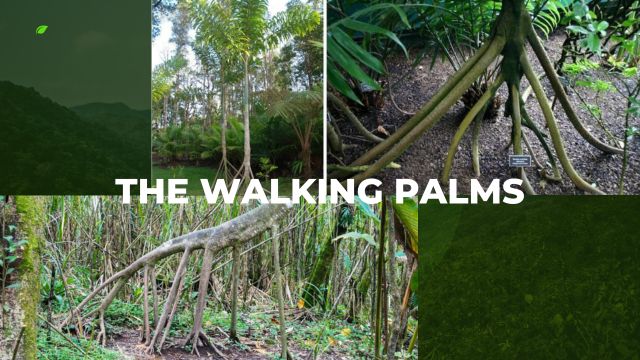Deep within the lush, verdant rainforests of tropical Latin America, tales of enchanted, roaming trees have swirled for decades. They are known as the “walking palms”—tall, ancient trees that supposedly possess the ability to slowly stride across the forest floor under the cover of night.

To the casual hiker in these steamy wildernesses, the sight of these peculiar palms alone is striking enough to set the imagination ablaze. Their massive, gnarled trunks seem propped up on a tangle of sturdy, protruding stilt-like roots in every direction. It’s almost as if the trees are balanced on a teetering bundle of rigid appendages, ready to simply pick themselves up and wander away at a moment’s notice.
And according to long-standing legend, that’s exactly what they do. Many local rainforest guides will solemnly swear they’ve witnessed these arboreal marvels migrating across the jungle in a slow, steady “waltz” over years and decades. By growing new roots towards the sunlight and allowing older ones to decay, it’s said walking palms can inch along at a languid pace of up to 65 feet per year!
But does any truth actually lie behind this fanciful rainforest lore? Or are the walking palms merely the stuff of myths, campfire tales and overactive imaginations?
Separating Fact from Fiction of Walking Palms
Also known by the botanical name Socratea exorrhiza, walking palms are very real species of tropical tree that can indeed tower up to 80 feet tall. While they may appear outwardly ambulatory thanks to their peculiar root system, it took modern scientific observation to finally put the “walking” claims to rest once and for all. At least, for the most part.
In 2005, renowned botanist Dr. Gerardo Avalos published a landmark study in the journal Biotropica after closely monitoring and measuring the growth patterns of multiple walking palm specimens over an extended period. His findings were rather blunt: the trees simply do not physically relocate from where they first take root. Ever.
According to Avalos’s detailed observations, the palms’ stilt-like appendages are completely anchored in place once they sprout. While some roots may cease growing or wither away over time as the tree shifts priorities for acquiring sunlight and nutrients, the palm remains stationary as new, healthy roots emerge elsewhere. The twisting, spindly root system merely served to stabilize the towering trees rather than literally walking across the forest.
If they can’t stroll anywhere,
How did the walking palm legends take root in the first place?
The Science of the Stately Stride For starters, the trees do exhibit some degree of what could very loosely be described as “movement.” Over generations, as new roots take hold and others decay, the palm’s overall base can appear to migrate away from its original growth spot by a few inches or feet per century, although it is still rooted in place.
And according to the paleobiologist Peter Vršanský, there are instances where trees trek in more dramatic fashion under the right circumstances. Vršanský recounts witnessing several palms bend over to develop a fresh network of roots on stable, solid ground after their original bases became unstable due to erosion.
“It’s essentially a survival tactic,” he explains, “as the trees relocate their bases only short distances to more sustainable, secure locations when their structural integrity becomes compromised.”
To an untrained observer happening upon this uncommon feat, it could certainly resemble an otherworldly, gliding motion across the jungle.
Also Read :10 Times Tree Rings Reveals Fascinating TruthsHowever, most botanists emphasize that even these purported root “migrations” are stationary maneuvers rather than true, locomotive walking motion. And as Avalos points out, his on-site survey didn’t turn up a single confirmed instance of palms relocating permanently from their original growth spots. Any legends of the trees wandering miles per year in search of sunlight remain safely tucked into the realm of pure fantasy.
The Bottom line
So while the walking palm may not be quite as supernatural as ancient rainforest mythology claims, its bizarre shape and life cycle alone are still enough to inspire wonder and marvel at the magic unfolding all around us in the natural world – even if these trees remain rooted to the spot. Armed with the truth, those haunting rainforest tales of lurching, wandering trees can now be appreciated for what they are: compelling flights of fancy and mystique spun from kernels of ecological truth.